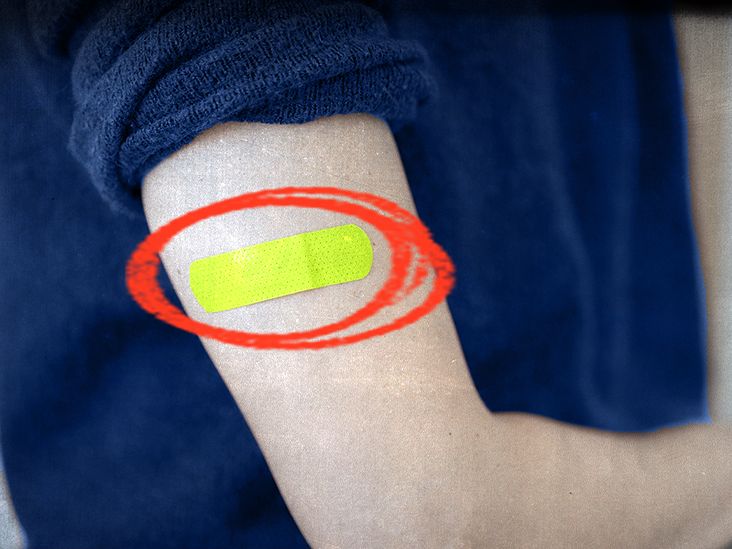Subcutaneous immunotherapy injections work the same way as their intravenous counterparts — by changing or enhancing a person’s immune responses to cancer.
Immunotherapy for cancer is a broad category of treatments that change or boost the body’s immune activity to help kill cancer cells.
Typically, immunotherapy is given as an infusion — a slow injection of immunotherapy solution through a port that has been
Subcutaneous immunotherapy treatments, which are given as injections under the skin, are becoming more widely available. These injections work through the same pharmacological processes as infusions but may help make immunotherapy for cancer more accessible for many people.
This article explores the basics of subcutaneous immunotherapy injections and their potential benefits.
Subcutaneous immunotherapy injections for cancer are given using a needle and a syringe. A doctor or oncological nurse inserts the needle into the space between the skin and muscle. The immunotherapy drug then diffuses just beneath the skin and is absorbed into small blood vessels called capillaries.
While all subcutaneous injections enter the body through this process, the way they work once absorbed varies by immunotherapy type.
The Food and Drug Administration (FDA) has approved several forms of subcutaneous immunotherapy injections for cancer. Some are approved for specific stages of cancer or treatment.
Some subcutaneous treatments may require an initial intravenous dose to make sure a person does not have any serious reactions to the medication. These include:
- monoclonal antibodies
- immune checkpoint inhibitors
- oncologic virus therapy
Monoclonal antibodies work in the body
Immune checkpoint inhibitors also bind to specific protein sites on a cancer cell. They work by blocking
Oncolytic virus therapy uses
Researchers are still investigating the range of cancers that may benefit from subcutaneous immunotherapy injections. Currently, these
- Renal cell carcinoma: the most common form of kidney cancer, representing as many as
90%Trusted Source of kidney cancers - Upper GI cancer: cancers affecting the esophagus, stomach, and small intestine
- Non-small cell lung cancer: lung cancer types including adenocarcinoma (the
most commonTrusted Source type of lung cancer), squamous cell carcinoma, and large cell carcinoma - Melanoma: a type of skin cancer that begins in pigment cells called melanocytes
- Bladder cancer: cancer that develops in the tissues of the bladder, with
urothelial carcinomaTrusted Source being the most common type - Some blood cancers: blood cancer types
includingTrusted Source follicular lymphoma, diffuse large B-cell lymphoma, and chronic lymphocytic leukemia - HER2-positive breast cancer: breast cancer that overexpresses a protein called human epidermal growth factor 2 (HER2)
Subcutaneous immunotherapy injections may offer several advantages over traditional infusions.
Less time consuming
Traditional infusions for immunotherapy can take a significant amount of time. A person must have a surgical port placed into one of their veins for ready access at infusion time. Infusions themselves are done in a clinical setting and can last more than 30 minutes, plus additional time to prepare and administer any other necessary medications.
In contrast, subcutaneous immunotherapy injections take a few seconds and may be given in more casual medical settings or at home in certain cases.
More accessible
Traveling to an infusion center or a clinic is not always convenient, especially if a person lives in a rural area or an area with a low population.
Subcutaneous immunotherapy injections can be given in less specialized medical settings and do not require home maintenance of a surgical port.
More comfortable
Although injection site reactions are still possible, subcutaneous injections are considered less painful than intravenous infusions and have a lower risk of infection.
Research into subcutaneous immunotherapy injections is ongoing, but many of the FDA-approved therapies under this banner demonstrate similar effectiveness and safety compared to their infusion counterparts.
For example, a 2024 clinical trial comparing subcutaneous nivolumab with infused nivolumab found that the two forms were similarly effective against clear cell renal cell carcinoma.
Subcutaneous immunotherapy injections for cancer include a variety of immunotherapy drugs that change or enhance the body’s natural immune responses.
In the past, many of these therapies had to be given by infusion, which required the surgical implantation of a port into a vein for the slow delivery of the selected medication.
Subcutaneous injections are given into the space between the skin and muscle and do not require special equipment or care at an infusion center.
Clinical trial evidence suggests that subcutaneous immunotherapy treatments are just as effective and safe as their infusion counterparts, though research is ongoing.



